Furniture Management Tool - Reseat ID
Reseat ID is a tool for furniture dealers, architects, & brands to give commercial furniture a second life.
A one-stop platform for companies to manage their furniture and help users create requisition requests to sell/move/donate their furniture.
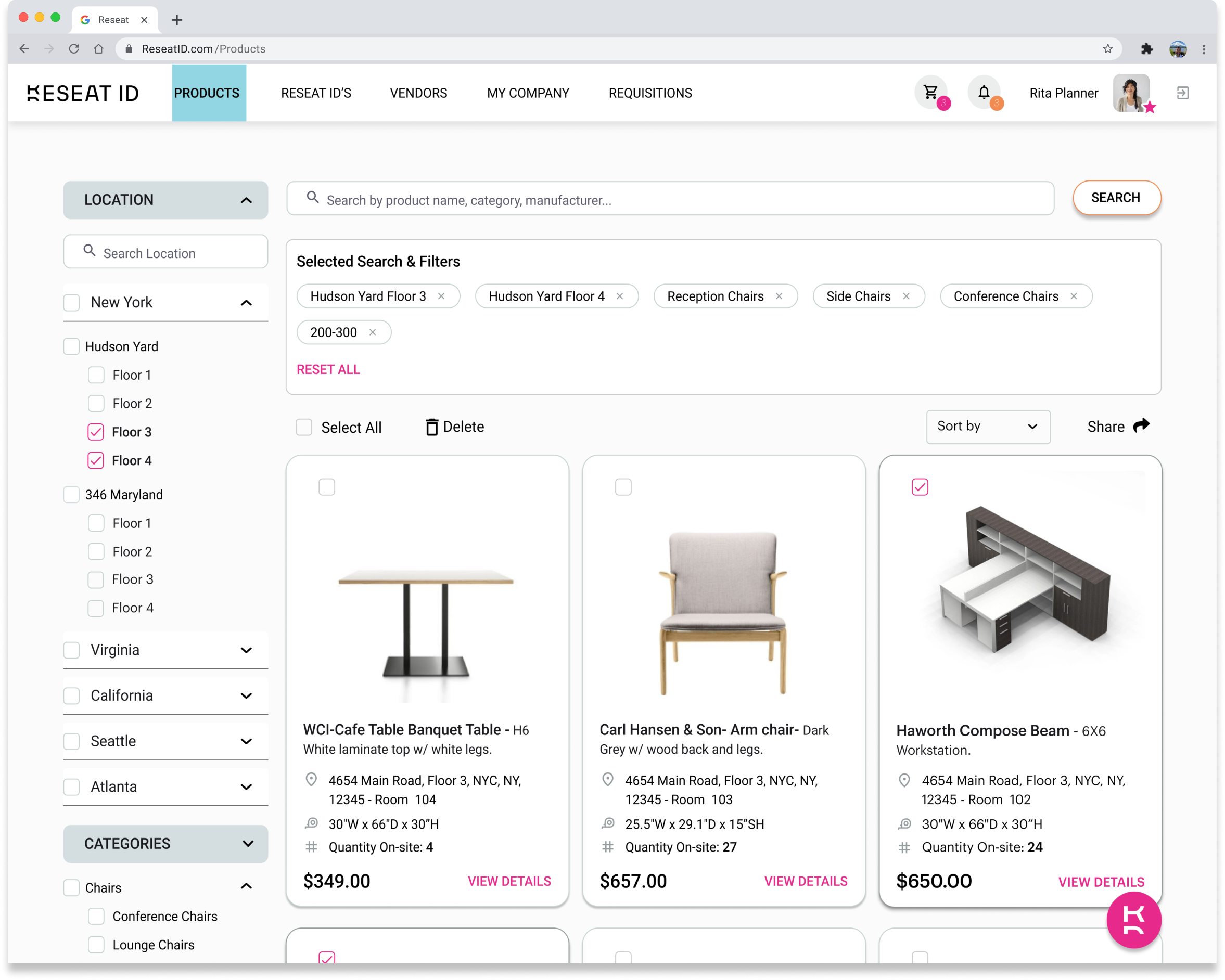
Link to the NeoCon award
Tools
Jira
Figma
Photoshop
After Effects
Team
1 Design Manager
1 UX Designer (Myself)
2 Developers
My Role
User Experience Design Design
System Low-High Fidelity Design
Usability Testing
Prototyping
Timeline
Jan 2022 – July 2022
Problem Statement
Great office furniture is built to last. But 99% of it ends up in a landfill because companies don’t have a proactive plan in place when getting rid of their office furniture.
Breaking this cycle of waste by helping companies plan for the lifecycle of furniture – right from the time of purchase. Because that is the only way to keep it out of landfills.
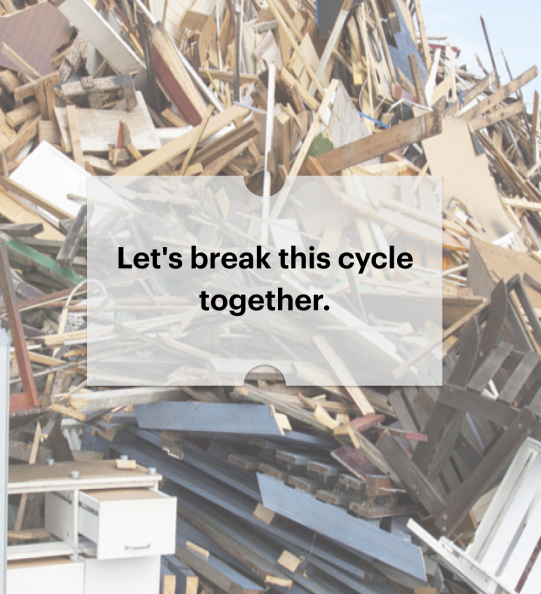
Market Study

$72 Billion in new office
furniture sales annually
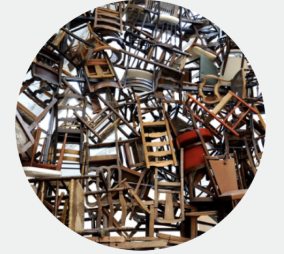
office furniture are in
landfills each year

untapped revenue stream sitting in landfill
Goals
Companies upload furniture inventories by their office location.
- Each piece of furniture receives a unique Reseat ID.
- Companies can track the furniture throughout its lifecycle.
- Create Requisitions for vendors to Move/Sell/Donate their furniture.
Solution
A one-stop platform for companies to manage their furniture and help users create requisition requests to sell/move/donate their furniture.
Generative Research
I conducted 1:1 interviewed with 5 people from the furniture industry to understand the User Problems and Goals. On the basis of user interviews, I conceptualized the user personas. These helped to paint a clear and realistic picture of users’ goals, needs, and behaviors.
User Problems
Discovery Sessions
Further discovery sessions helped me understand the needs of the users, and I conducted a card sorting exercise to comprehend their needs and wants.

Task Analysis
After understanding the workflow, to enhance usability and user satisfaction, I analyzed the tasks users perform to achieve their goals in a digital product and then worked to elevate and optimize the sequence of steps they would take to accomplish these tasks.
Workflow Analysis
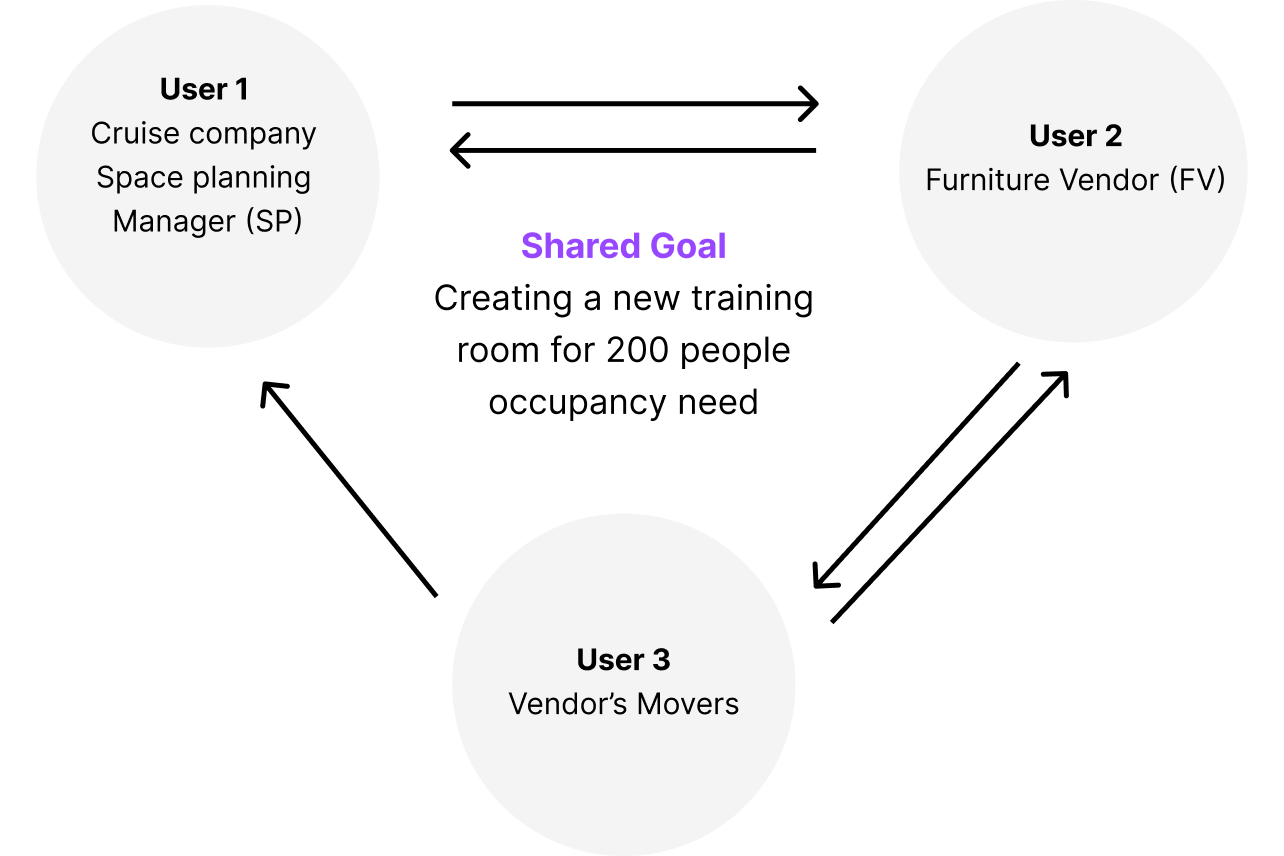
User 1 (SP): Approve proposal to relocate existing furniture between offices based on occupancy needs, typically with the company’s designated furniture vendor.
User 2 goal: Furniture vendor handles company office furniture requests, creates space plans, and submits proposals.
User 3 goal: Movers : Fulfill furniture delivery request before installation day.
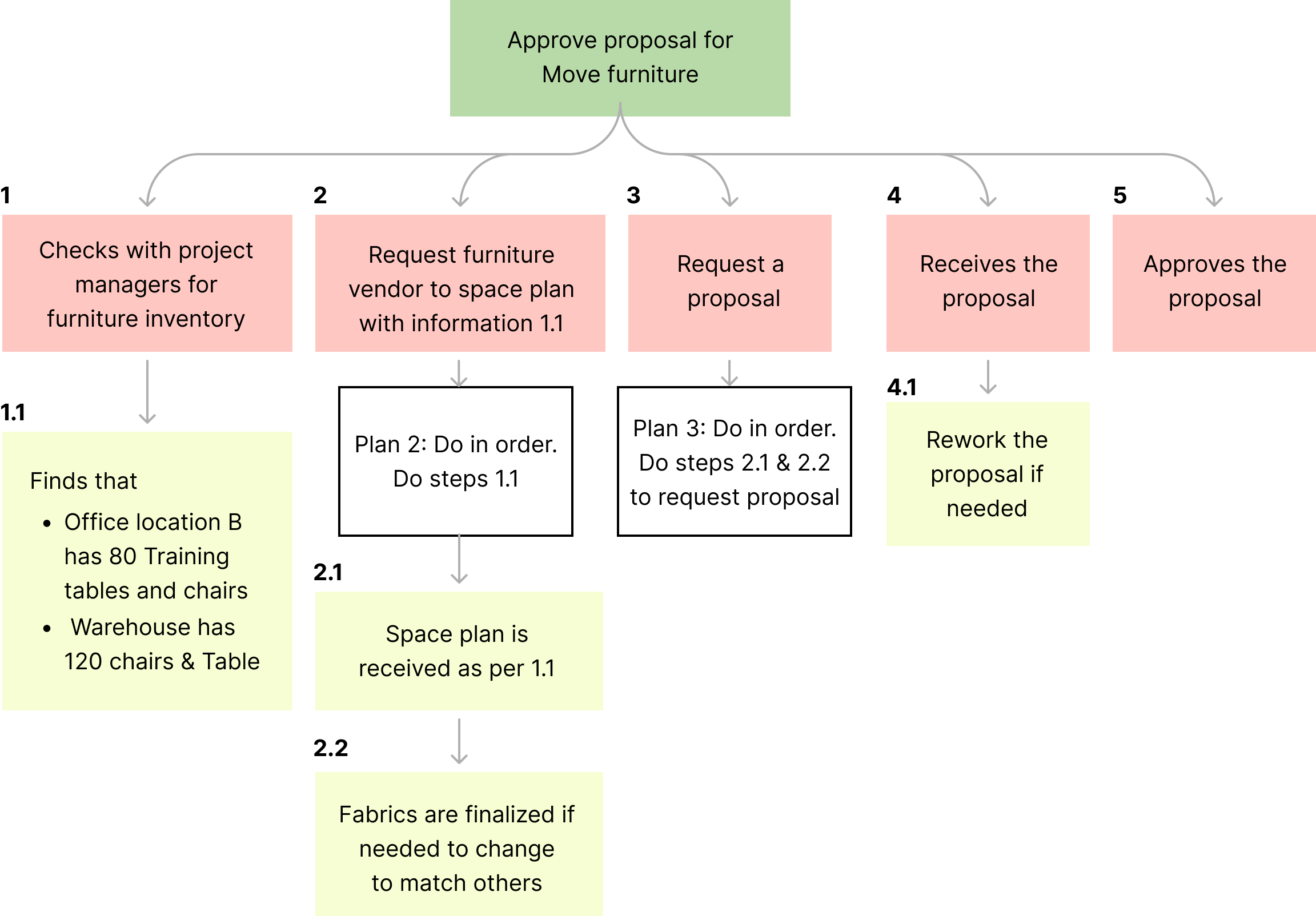
Ideation Phase
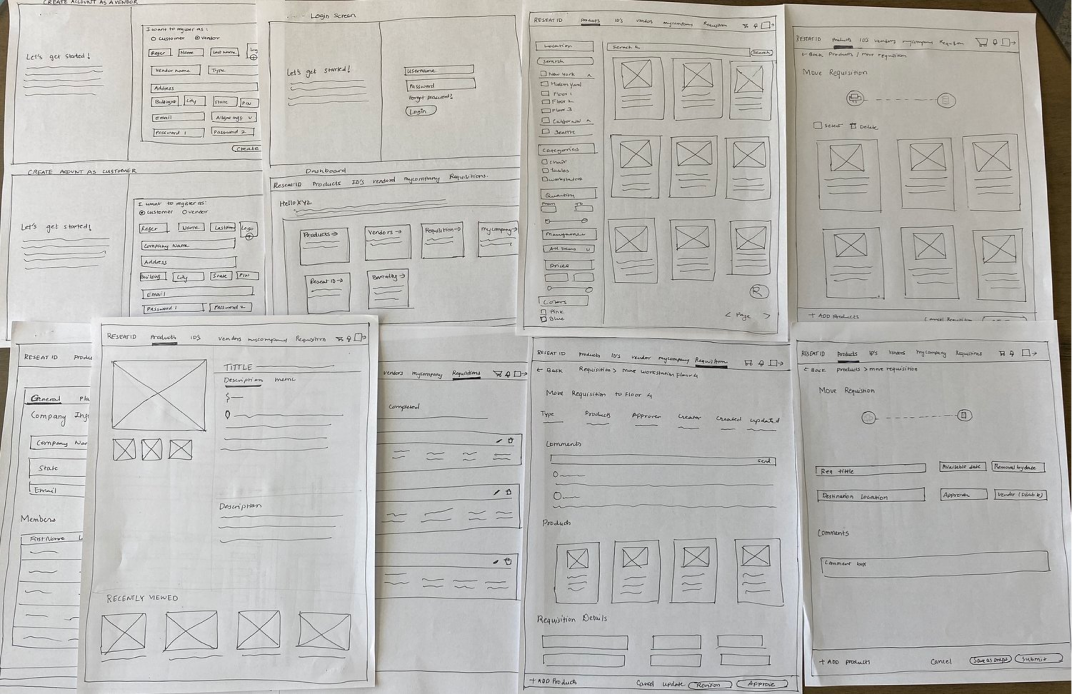
Design Decision
After digitizing the selected sketches, I proceeded to test the mid-fidelity designs to transform them into finished MVP designs. Here is an overview of the product page design decisions and the transformation process.
Product Page
Before
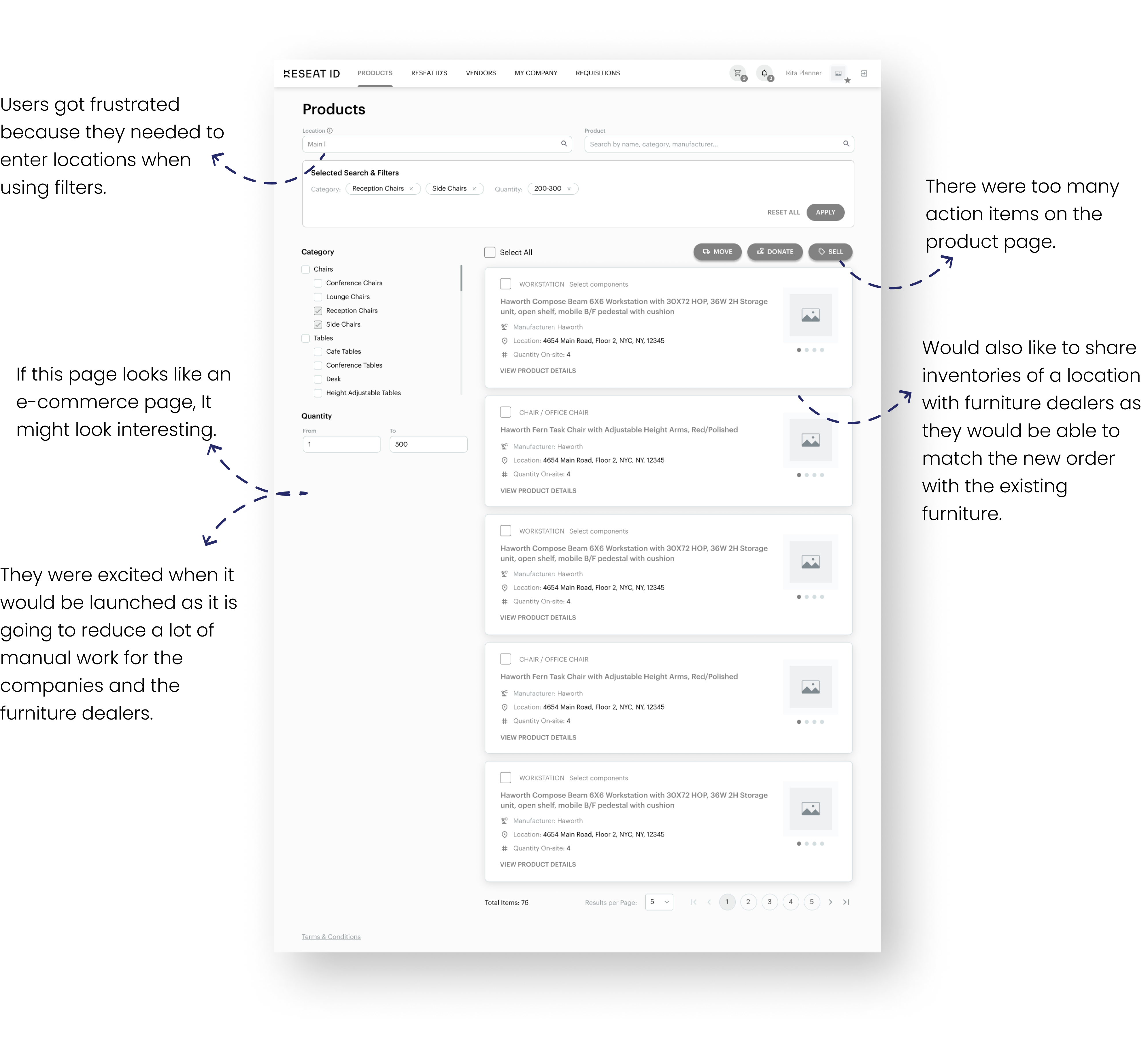
After
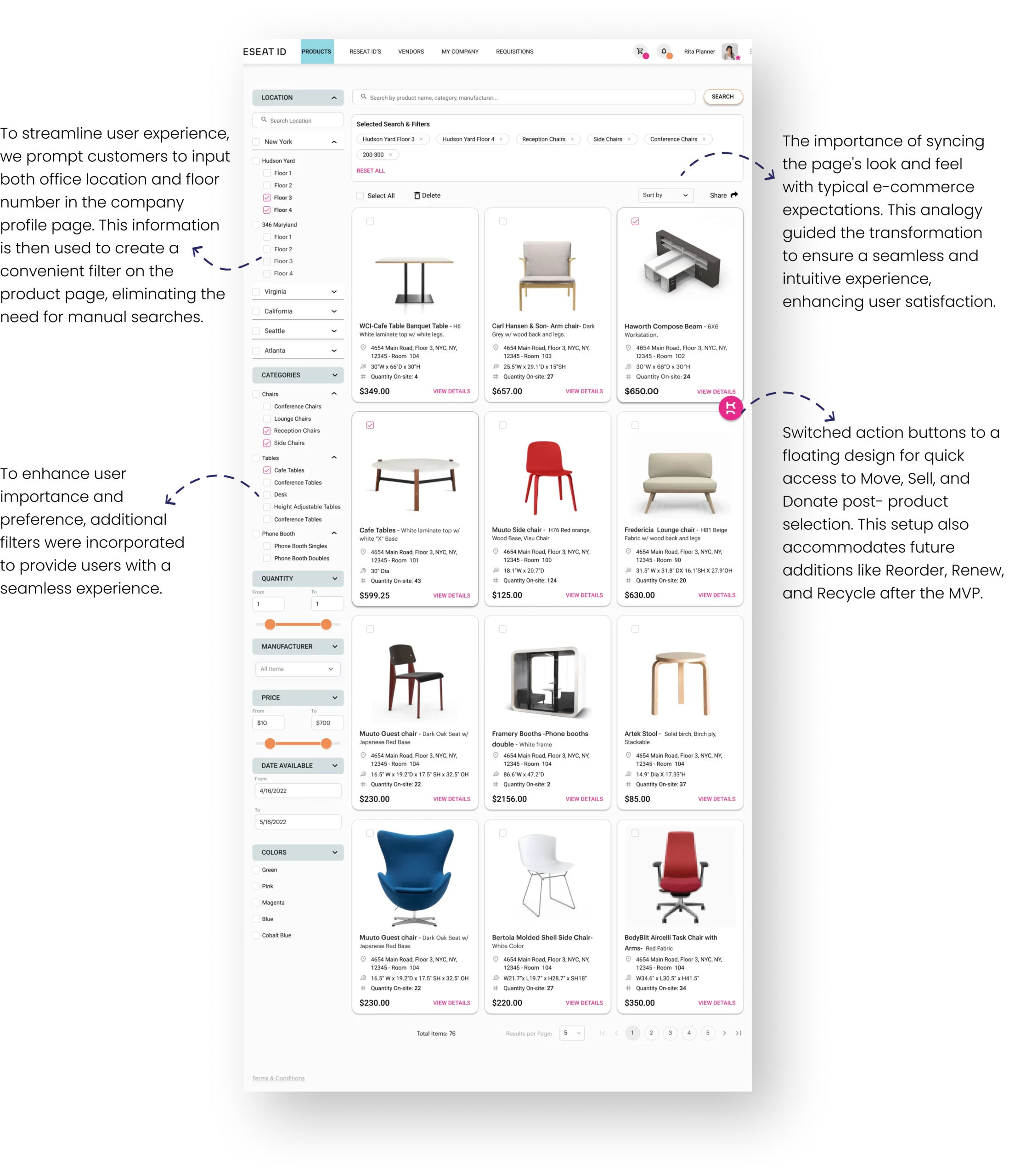
Final Screens
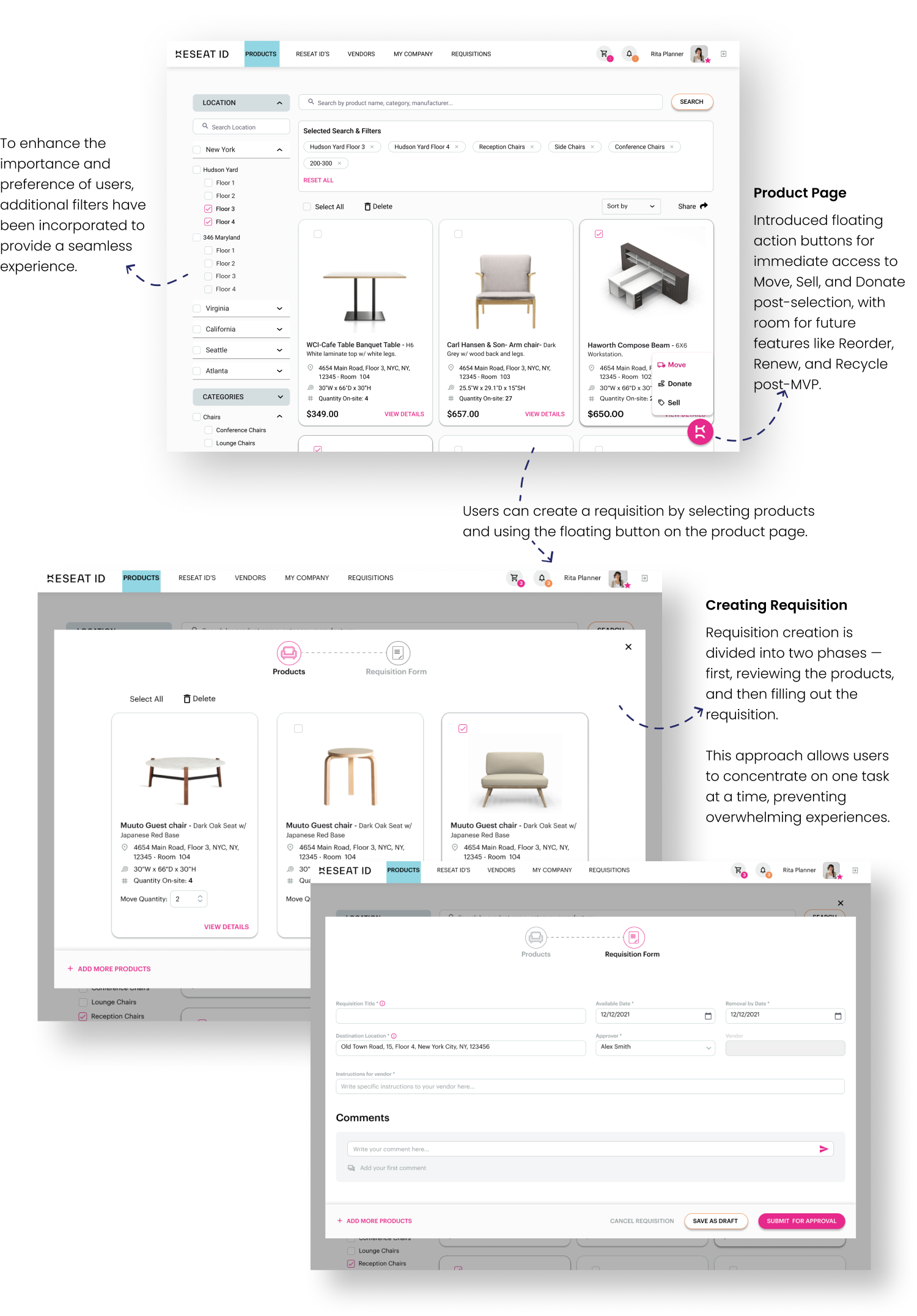
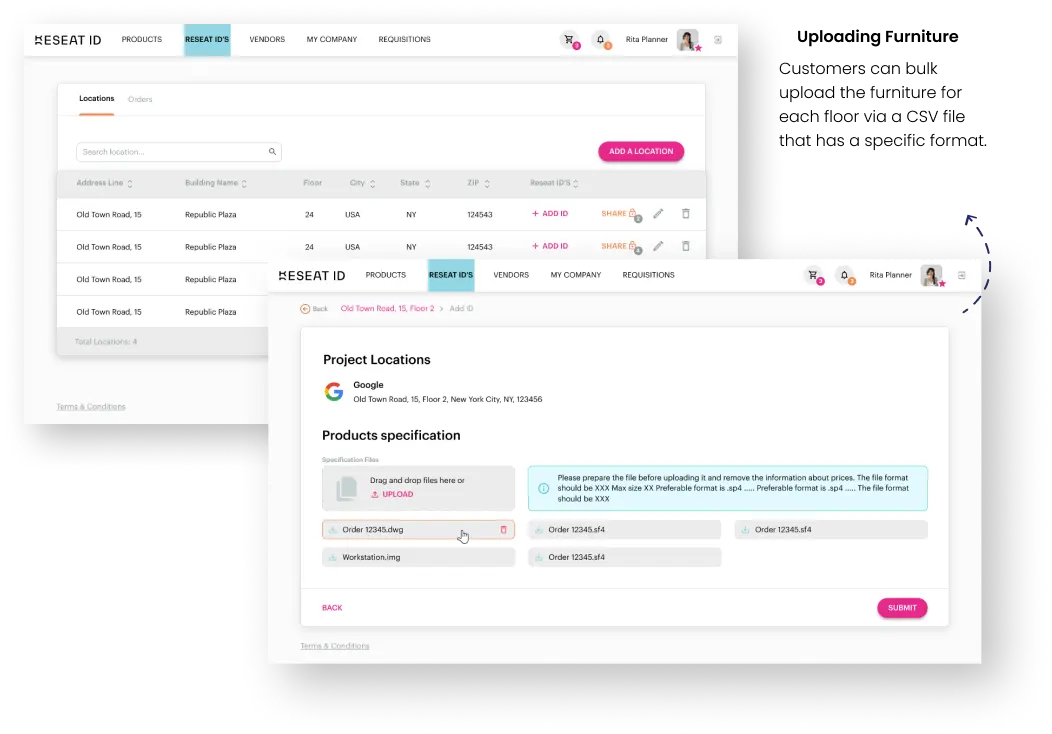
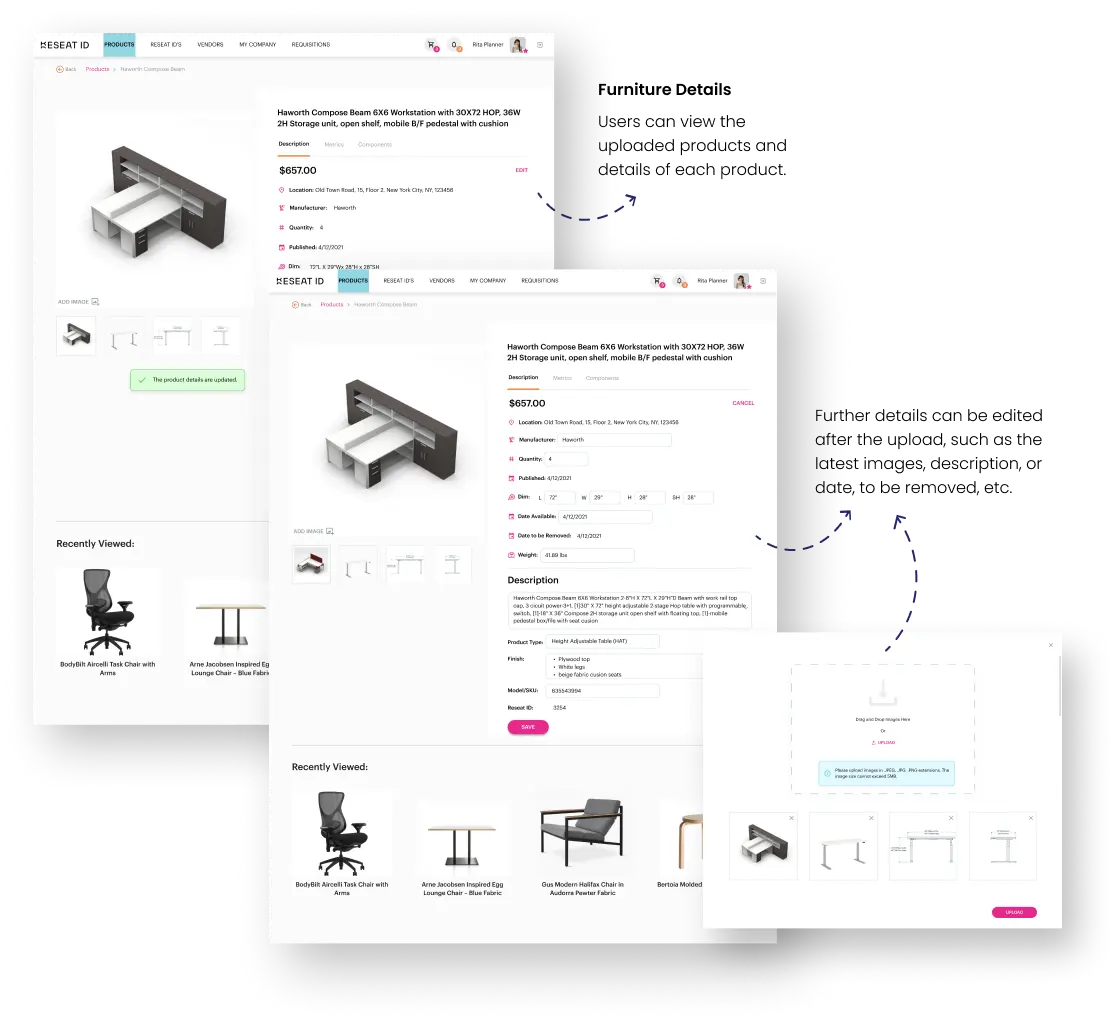
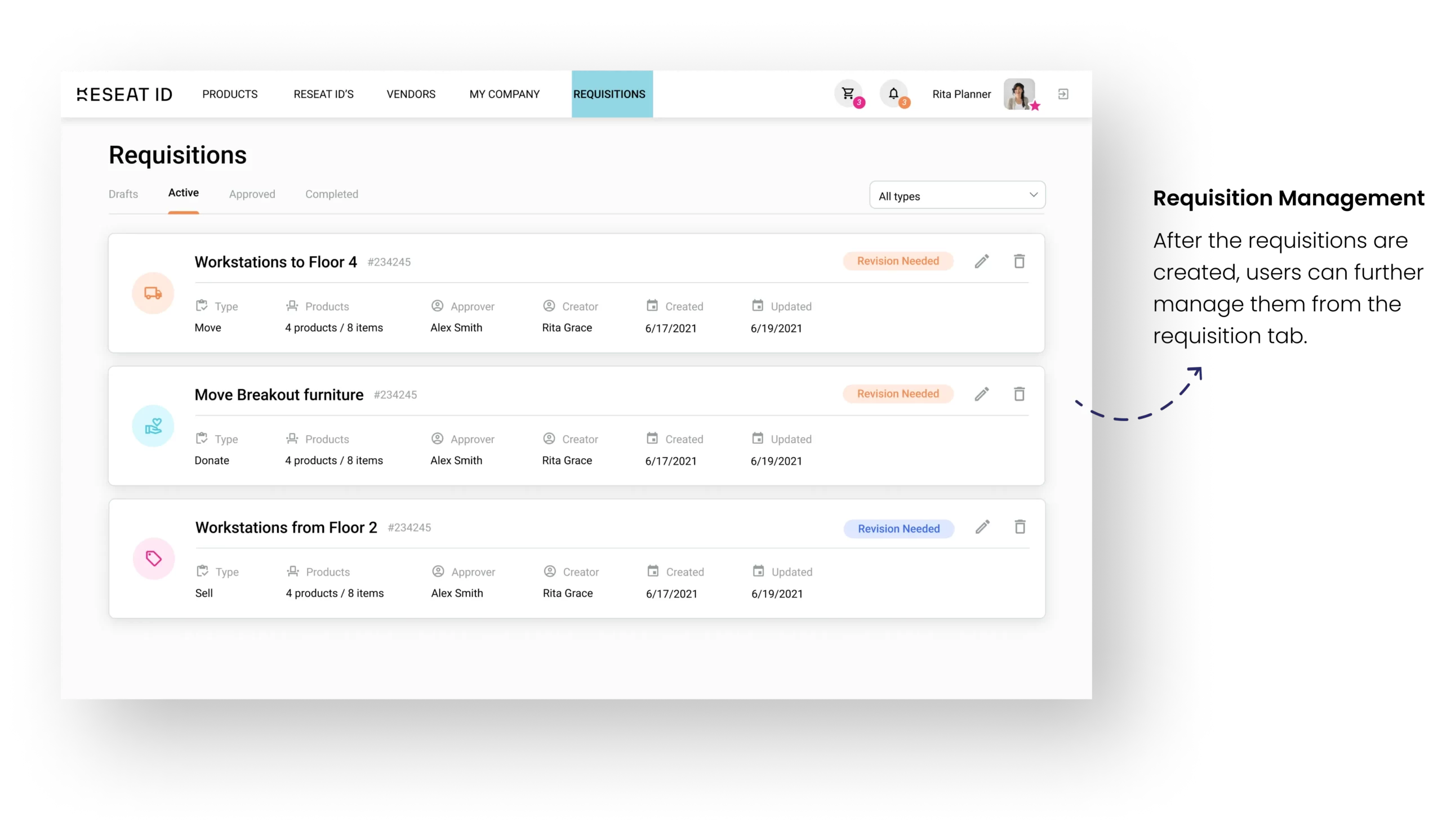
Reflection
System Thinking is Crucial in Experience Design
This project helped me learn the process of end-to-end product design and understand why system thinking is crucial in experience design. When designing a platform containing both service providers and receivers, it is important to include both sides of users in designing the system. Even though I can only start with one side of the platform, I need to understand other users to make decisions. Design decisions and features for one side are usually decided by the need and preferences of the other side.
Documentation is Important
Documentation helps to ensure consent and expectations. It helps to tell the narrative for decisions made, and how the team or the users responded to different situations.
Results
97% of the manual work and email communication are digitalized through the platform, which serves streamlined work orders and tracks approvals.
85% of users were able to track and keep count of furniture in different office buildings with ease and can keep track of their lifecycle.
Net Promoter Score – Would you recommend this application to other people? (In-app survey)
Ask the customers to rate a feature and get exact results and feedback to further iterate on the designs to meet Customer Satisfaction.